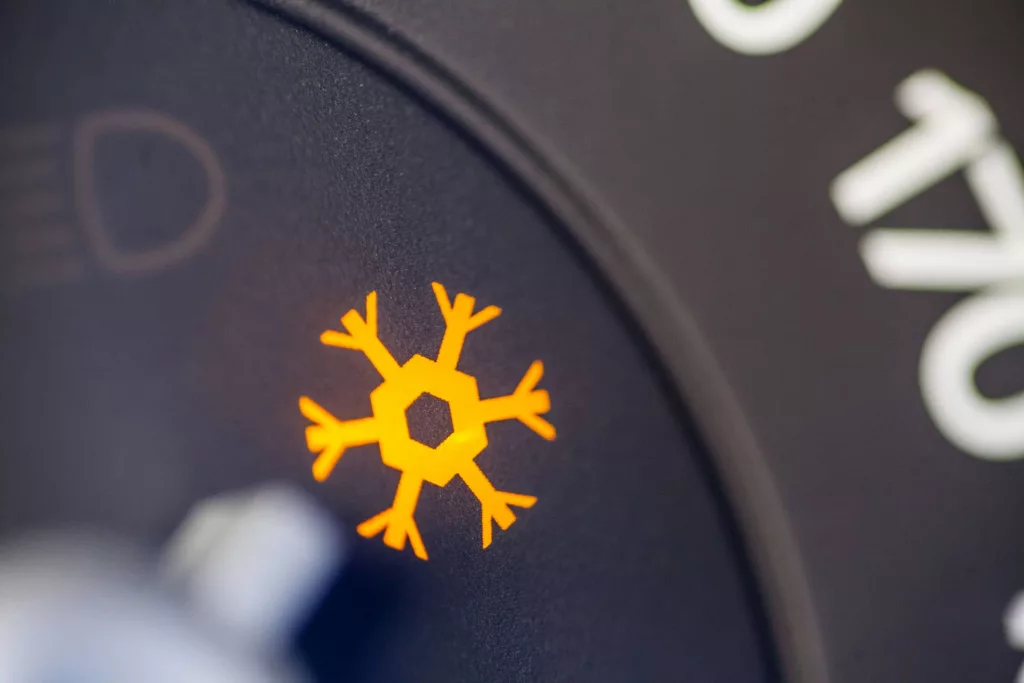The County Road Association of Michigan is the first to admit that too much frosting is a good thing when you’re icing a cake, but frosty conditions on roads can be a recipe for disaster. They remind drivers that with dropping temperatures and safety on their minds, county road workers would like to keep frosty conditions to a minimum, and tell us that frost sensors can help do just that.
We all know that parts of Michigan can receive dozens of inches of snowfall annually, and to prepare for that sometimes fluffy white stuff, Muskegon, Ottawa and Kent Counties are all enlisting that new force to help – frost sensors.
Frost sensors are utility pole-mounted devicds that monitor air temperature, road temperature, dewpoint and humidity, and send out data packages every 20 minutes. From there, cloud-based software organizes the data and sends alerts and display charts to road agencies. With the information provided, county road agencies can send their plow and salt truck drivers to where they are needed the most.
The Muskegon County Road Commission is using its mapping program, WEBMDSS, to pull other mapping data from cameras set up by MDOT to get the best and most accurate data for snowfall. They are using their experience to help neighboring Ottawa and Kent Counties as well.
Drew Nichols, Maintenance Superintendent at the Muskegon County Road Commission, says, “All of us road commissions are a big family,” and adds, “Everyone does something different and we’re always sharing thoughts and comparing notes to see who’s coming up with the next idea.”
The Ottawa County Road Commission has a total of 24 sensors and is working on improving those which they have. With the improvements, they will be able to take photos of the road every 20 minutes once the road temperature is below 45 degrees.
Ryan Kemppainen, Ottawa County Road Commission Operations Superintendent, says, “With the sensors, we have the ability to see what’s going on across the county,” and notes, “A couple degrees in the winter when the temperature is hovering around freezing can make a big difference in winter maintenance.”
Using the new sensors, Muskegon and Ottawa Counties are able to save on both operational and material costs while still prioritizing the safety of county residents.
Kemppainen says, “Expectations increase year to year,” and adds, “This system helps us react to winter maintenance at a faster pace for the motoring public. Monitoring these elements is a great tool, and as time goes on, the technology will only improve and help us more.”
With frost sensors on their team, county road agencies can have peace of mind by better serving their communities and improving the driving conditions for residents.
You can learn more about frost sensors in the latest issue of Crossroads magazine, the quarterly journal of the County Road Association (CRA) of Michigan, which can be viewed digitally or downloaded at: https://micountyroads.org/newsroom/crossroads/.
The 83 members of the County Road Association of Michigan represent the unified voice for a safe and efficient county transportation infrastructure system in Michigan, including appropriate stewardship of the public’s right-of-way in rural and urban Michigan. Collectively, Michigan’s county road agencies manage 75-percent of all roads in the state, including 90,000 miles of roads and 5,700 bridges. County road agencies also maintain the state’s highway system in 64 counties. Michigan has the nation’s fourth-largest local road system.






